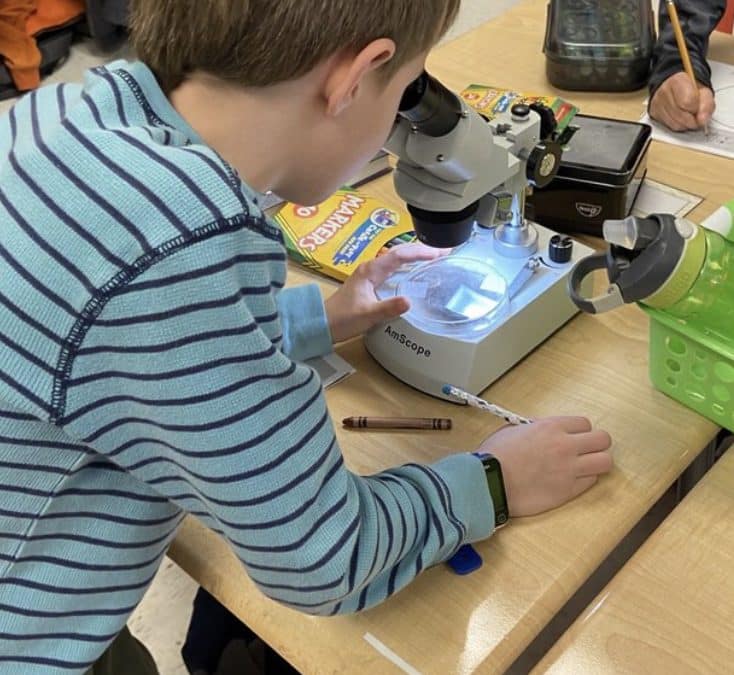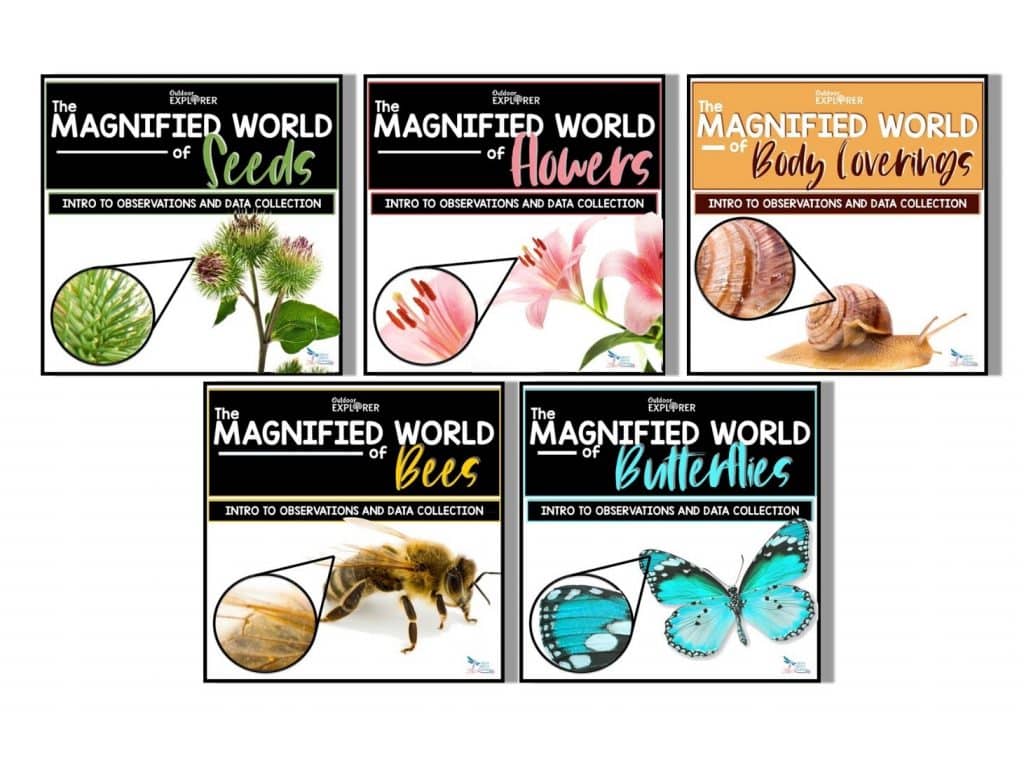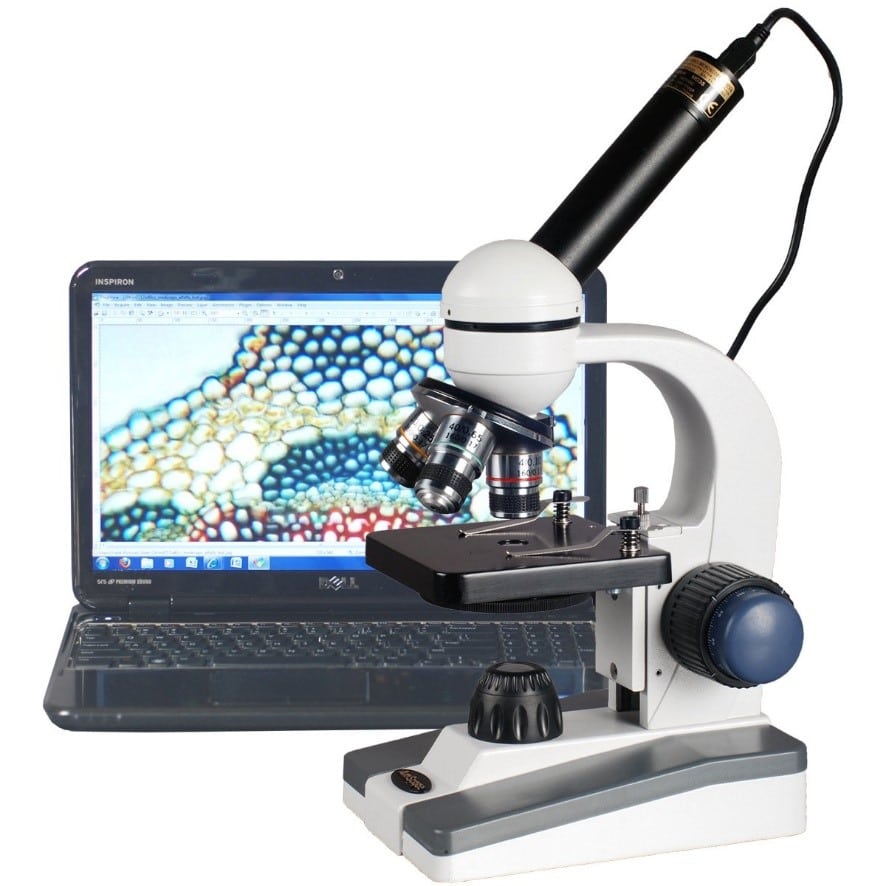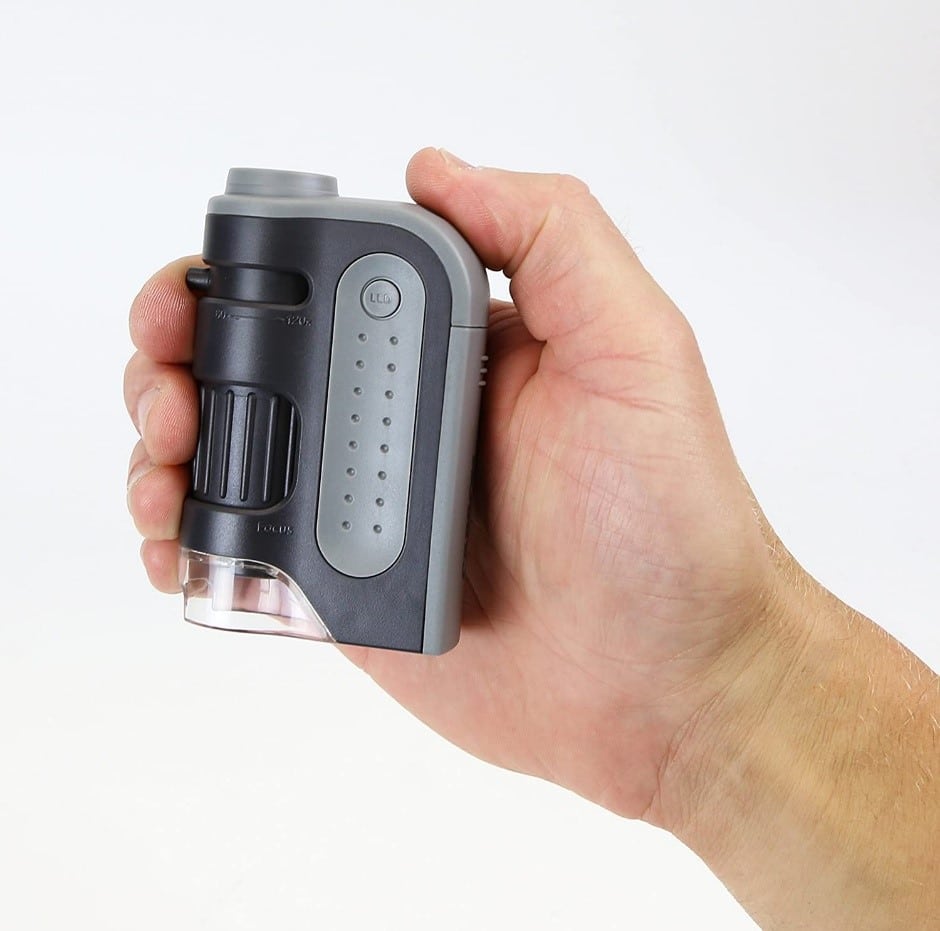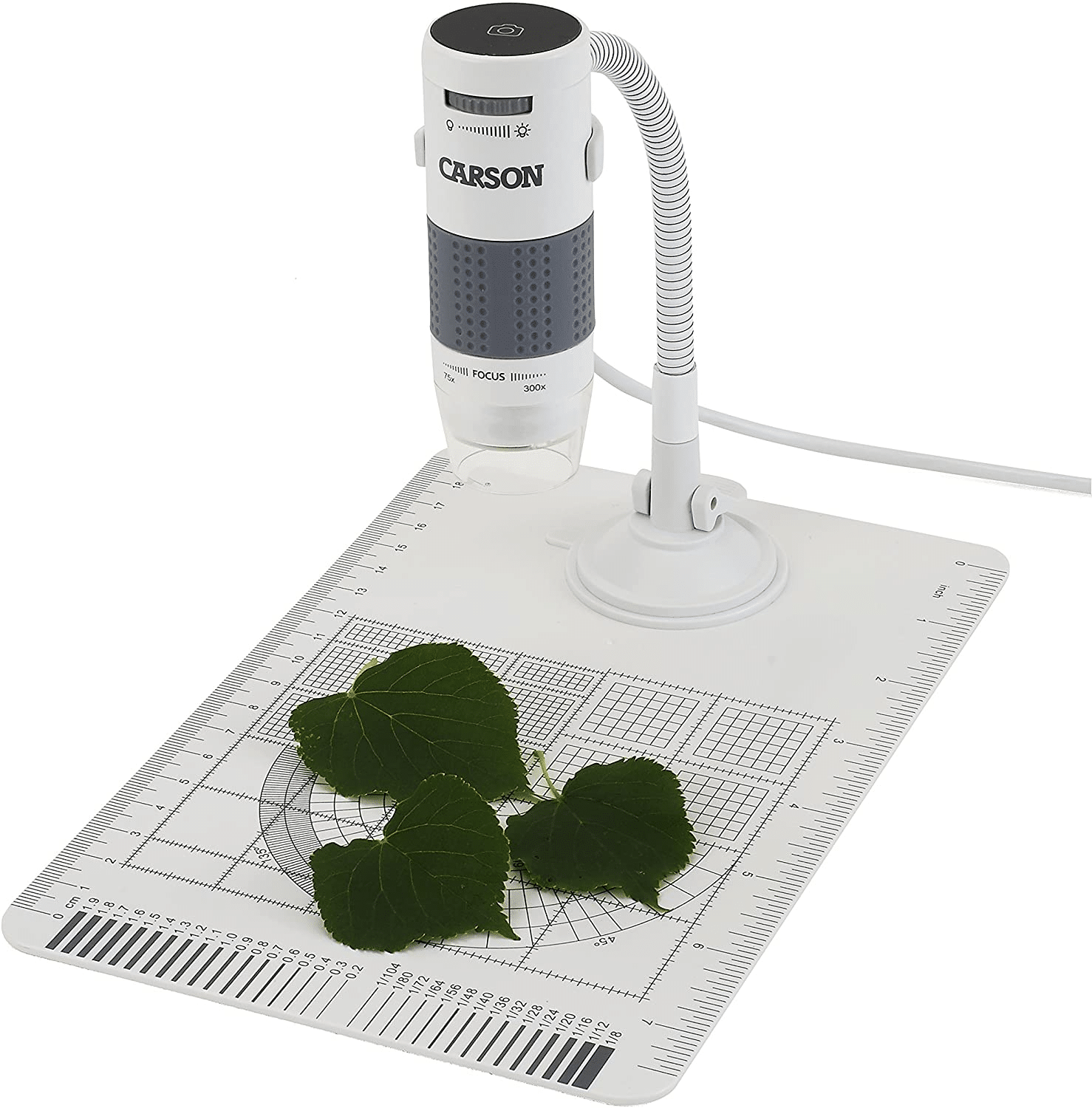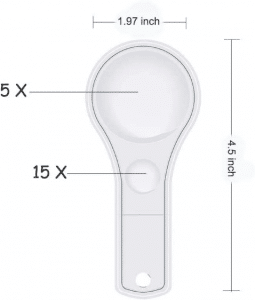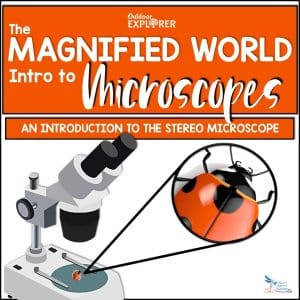Since their invention in the 1500’s, microscopes have allowed us to dive into a magnified world beyond the limits of our vision. Now, one of the most widely used scientific tools used extensively throughout the natural sciences, the microscope is readily available and has been adapted for science classrooms. Unfortunately, this student-favorite instrument is notably absent from most elementary school science programs for three reasons:
- lack of standard-based elementary lessons that use microscopy;
- budget; and
- lack of knowledge in microscopy
The following article will offer solutions to each previous limit so that you and your students can explore into the Magnified World.
Elementary Lessons that Support NGSS – The Magnified World
Nitty Gritty Science Jr.’s Magnified World series are a collection of activities that tie science into math and literacy and encourages students to learn with and from nature. Each engaging lesson will introduce your young scientists to new worlds that can only be seen when viewed through lenses that magnify objects! The Magnified World is PERFECT for your curious scientists and will nurture science inquiry skills. Click the image below to learn more about this series that supports Next Generation Science Standards (NGSS).
Best Microscopes for Elementary Classrooms and Budget-Friendly Alternatives
It’s no secret, schools are given a budget, and depending on what is needed, teachers may or may not have the funding they request for their elementary science programs. The following is a list of my favorite microscopy options for all classroom budgets, keeping not only cost in mind, but also that you work with children, so sturdiness and longevity are also important factors.
- AmScope SE306R-P-LED Forward-Mounted Binocular Stereo Microscope (Budget – approx. $150)
Two types of microscopes are usually found in a science classroom – a stereo microscope (above – also known as a dissecting scope) or a compound light microscope. I feel that stereo microscopes (are hands-down the best first microscope for elementary students. Unlike compound light microscopes which need light to pass through a very small, thin specimen, stereo microscopes allow viewers to see objects in three dimensions. They also allow students to look at pretty much anything that will fit on the stage and there is no need to prepare the object so that it fits on a microscope slide. Students can look at insects, plants, coins, or anything else in all three dimensions, providing the most realistic viewing experience imaginable.
I love this particular model for classrooms because it has:
- Option to either use 120V plug or rechargeable AA batteries so you can use in stations around your room or even take it outside.
- Forward-mounted binocular viewing head with pair of 10x widefield eyepieces, adjustable interpupillary distance, and 45-degree inclination to simplify viewing for young users
- Interchangeable 2x and 4x objectives provide low magnification and longer focal length for inspecting large-scale specimens
- Upper and lower illumination with LED light source to illuminate specimens
- AmScope 40X-1000X LED Student Microscope + 5MP USB Camera (Budget – approx. $175)
This microscope is perfect for upper elementary once students have mastered the stereo microscope. This microscope is also powered by outlet or batteries, so perfect for stations. More instruction will be needed for students to use this microscope to make sure that slides aren’t cracked and lenses aren’t broken. However, when used properly, this microscope has three objectives that will give students the highest magnification and will truly allow them to see images that cannot be seen with the naked eye. I love this choice because it also comes with a digital camera that fits into the eyepiece, so you can have students document their findings or so you can demonstrate what features you would like them to find. The benefits of this compound light microscope include:
- Widefield optics offers five magnifications, 40X, 100X, 250X, 400X and 1000X
- Sturdy all-metal framework
- LED illumination by wall-power and/or batteries
- USB 2. 0 digital camera for photos and videos
- Carson MicroBrite Plus 60x-120x LED Lighted Pocket Microscope with Aspheric Lens System (MM-300 or MM-300MU) (Budget – approx. $15)
I LOVE, LOVE, LOVE this handy pocket microscope!! Not only do I think a class set is possible and practical at this price point, but the portability of this microscope allows students to carry this microscope as a part of their nature kit while exploring outside. Teachers will need to give students a simple demo on how to use this the first time, but after that, you will be amazed at the microscopy they achieve! This was a stocking stuffer for all the kids in my family one Christmas, and it follows them along on all their travels. Benefits of this pocket microscope include:
- Powerful 60x-120x Magnification Range
- Lenses Provide Superior Optics
- Designed to be Compact, Lightweight and Portable
- Bright LED Light is Powered by 1 AA Battery
- Carson eFlex 75x/300x Effective Magnification (Based on a 21″ monitor) LED Lighted USB Digital Microscope with Flexible Stand and Base (Budget – approx. $40)
Digital scopes are awesome in that they integrate a camera into the microscope so an image of the specimen can be observed and analyzed directly on an electronic monitor display. This means eyepieces are unnecessary and teachers can monitor what students are focusing on just by looking at their screens. Teacher-led lessons are very practical with digital scopes since images can be projected on the front screen. Since all image data is connected to a computer, all images can be stored and organized. Specimens can also be observed over an extended period of time, with time-lapse capabilities. The possibilities are really endless with this microscope. There are wireless products also available, but this product I have used personally and appreciate the following features:
- Powerful 300x Magnification
- Adjustable LED Lighting Knob and Focus Knob
- Flexible stand with suction cup adapter attaches to any smooth surface or the included
- Capture an image or close-focus video with the click of a button
- No batteries required
- Compatible with Windows 10, 8/8.1, 7 (32/64 bit), Vista (32/64 bit), XP SP2+ along with all MAC operating systems
- 10X Magnifying Glass (75mm Magnifying Glass Lens) with Thickened Rubbery Frame with Non-Slip Soft Handle (2 Pc) (Budget – approx. $7 each; $14 for pair)
No, I didn’t forget that this list is for microscopes. Actually, a simple microscope uses a single lens, so magnifying glasses are simple microscopes. This particular choice is perfect if you’re not ready to commit spending your budget on microscopes until you have fully seen the benefit of microscopy. This particular choice of magnifying glass can magnify up to ten times (10x) which will not disappoint when students are studying specimens. I also have these inexpensive, yet durable lenses for the following reasons:
- The lens is made of thick glass that will not distort images
- Glass does not scratch easily and rubbery frame protects it from cracking
- The ergonomic handle is perfect for little hands
- Comes with a wrist strap so it won’t get lost when exploring outdoors and can be hung inside the cabinet when being stored
- Plastic Magnifier 5X and 15X Hand Lens 24 Pack (Budget? What budget? approx. $16 per 24, or $0.66 each)
You have zero budget but want your students to benefit from learning about the Magnified World – then this class set is the perfect alternative. Most students have used a small hand lens like this before, but many are never properly taught about its dual magnification properties. With these dual-lens magnifiers, students can compare the detail of their specimen at two separate magnifications. Unfortunately, the smaller lens on the magnifier has the higher magnification, so practice on holding the small lens over the area of focus and using one eye is needed at the beginning, but that’s it for the learning curve with these bad boys. Important features:
- Small enough to fit in each students’ nature kit
- 2 separate magnifications – 5x and 15x
- Hole at the bottom to attach a string for a wrist strap or necklace
7. uHandy Mobile Microscopes (Budget varies $35 for individual – $1390 for classroom set)
Microscopes for your mobile devices are the latest phone/tablet accessory, and although there a lot of different ones out there, I finally found one that not only works spectacularly but also is thoughtful in design for ease of use, which makes the uHandy Mobile Microscope a great choice for students, whether you buy the teacher kit meant for displaying specimens to your students or the classroom kit where each student uses their own device. I’ve recently shared a post all about the uHandy Mobile Microscope Teacher Kit that you can read here, but the following are features that I found quite impressive:
- So easy, just turn on camera app, clip on low magnification lens and begin magnifying!
- Design allows lens to clip snuggly around mobile device camera; no sliding
- 2 separate lenses – low magnification (with attached mini petri dish) and high magnification
- Easily take images or video, or project magnified specimen onto smartboard to share with students
- Magnets secure slide holder in place so you don’t have to juggle holding slide and trying to locate specimen
Beginner’s Guide to Microscopes
If you have never used a microscope in your classroom, or maybe the last time you used a microscope was in high school biology, then there are a lot of great sources to help with basics or as a refresher. Here are some to get you started:
An intro for both you and your students is this Magnified World Intro to Microscopes lesson on how to use a stereo microscope. Not only will this introduction lesson go over the parts and how to use them, but it also allows practice for magnifying with a stereomicroscope. Click image below to learn more:
There are also some great books that will take you through different types of microscopes, as well as get you familiar with the types of images you can see using stereomicroscopes, compound light microscopes, and even electron microscopes. My recommendations include the following (click on each to learn more):
I know you will be so glad you added microscopy to your science program. The experience will be unforgettable for your students and who knows, you may have just kicked off that “spark” for the next Stephen Hawking or Elon Musk in your classroom!
This article may contain some affiliate links, which means I might earn a small commission if you make a purchase which helps me run this website and promote giveaways. There is no extra cost to the reader. I only recommend products and services that I have personally used or have thoroughly researched.

